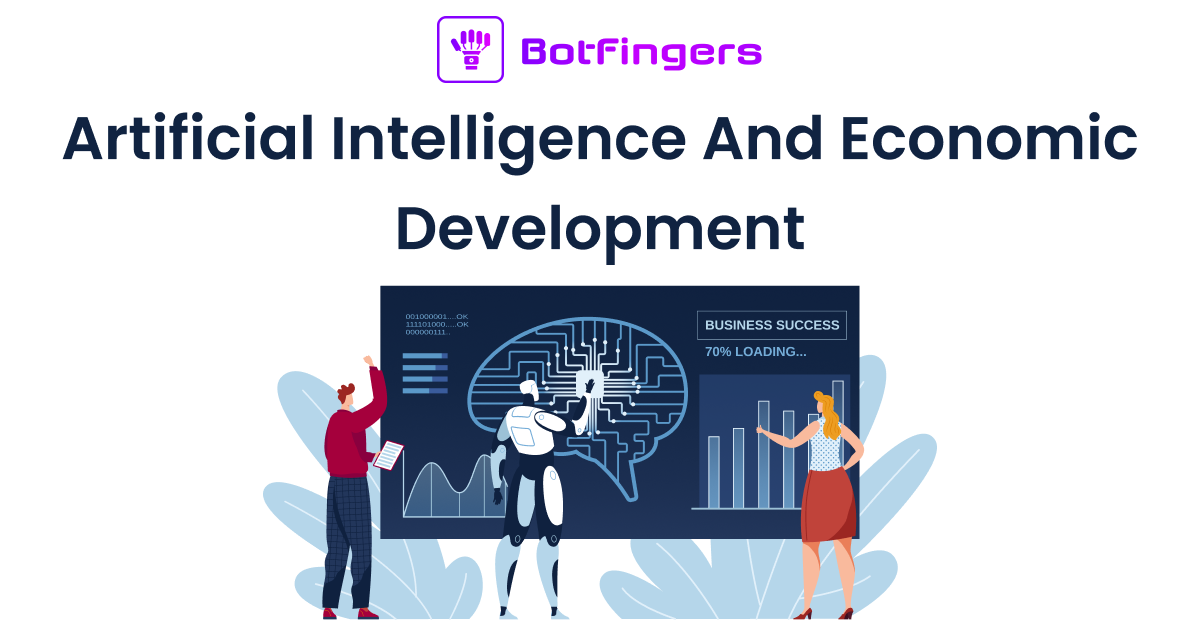Artificial intelligence (AI) is the simulation of human intelligence processes by computer systems. These processes include learning (the acquisition of information and rules for using the information), reasoning (using the rules to reach approximate or definite conclusions), and self-correction. AI has been around for decades, but recent advances in machine learning and big data have led to a surge in its adoption across a wide range of industries, including finance, healthcare, and transportation.
The potential for AI to drive economic development is significant. McKinsey Global Institute estimates that AI could generate between $13 trillion and $15 trillion in global economic activity by 2030, and the impact will be felt across many sectors, from manufacturing and retail to healthcare and education. However, the benefits of AI are not evenly distributed, and policymakers must consider how to ensure that the technology benefits all members of society.
The Potential of AI in Economic Development
AI has the potential to significantly boost productivity across a wide range of industries, leading to increased economic growth. Here are a few ways in which AI is already contributing to economic development:
- Improving Efficiency and Productivity: AI-powered automation can help companies streamline their operations, reduce waste, and increase productivity. For example, predictive maintenance algorithms can help manufacturers optimize their production processes, while chatbots can help customer service teams handle routine inquiries more efficiently.
- Enabling New Products and Services: AI can help companies develop new products and services that were previously impossible or impractical. For example, AI-powered healthcare systems can analyze vast amounts of patient data to identify patterns and suggest treatments that are personalized to each individual.
- Enhancing Decision-Making: AI can help decision-makers better understand complex systems and make more informed decisions. For example, AI can help financial institutions identify fraudulent transactions and assess creditworthiness more accurately.
- Facilitating Research and Development: AI can help researchers analyze large datasets and identify patterns that would be difficult for humans to detect. For example, AI-powered drug discovery systems can analyze vast amounts of chemical data to identify promising drug candidates.
Challenges and Risks Associated with AI Adoption
While AI has the potential to drive economic development, there are also significant challenges and risks associated with its adoption. Here are a few of the key challenges:
- Job Displacement: One of the most significant risks associated with AI adoption is the displacement of jobs. As AI-powered automation becomes more widespread, many jobs that are currently performed by humans may become obsolete. This could lead to significant job losses, particularly in industries that are already struggling with automation, such as manufacturing.
- Bias and Discrimination: AI systems are only as unbiased as the data they are trained on. If AI algorithms are trained on biased data, they may perpetuate existing biases and discrimination. This could lead to negative outcomes for individuals and communities that are already marginalized.
- Privacy and Security: AI systems often rely on large amounts of data, and this data can be sensitive. If AI systems are not properly secured, they could be vulnerable to cyberattacks, leading to breaches of privacy and security.
- Lack of Transparency: AI systems can be opaque, making it difficult to understand how they are making decisions. This lack of transparency can be problematic in situations where decisions have significant implications, such as in the criminal justice system.
Policy Considerations for AI Adoption
To ensure that AI adoption supports economic development in a way that benefits all members of society, policymakers must consider a range of issues. Here are a few of the key policy considerations:
- Investment in Education and Training: As AI adoption accelerates, many workers will need to acquire new skills in order to remain employable. Policymakers must invest in education and training programs that equip workers with the skills they need to succeed in a rapidly changing labor market.
- Addressing Job Displacement: Policymakers must also consider how to address the potential job displacement that could result from AI adoption. This could include policies such as retraining programs, wage subsidies, and job guarantees.
- Ensuring Fairness and Equity: Policymakers must take steps to ensure that the benefits of AI are distributed fairly and equitably across society. This could include measures such as anti-discrimination regulations and income redistribution policies.
- Protecting Privacy and Security: Policymakers must also consider how to protect the privacy and security of individuals’ data in an AI-driven world. This could include regulations on data collection and storage, as well as penalties for data breaches.
- Encouraging Transparency: Policymakers must encourage transparency in AI systems so that individuals and organizations can understand how decisions are being made. This could include requirements for explainability and auditing of AI systems.
Conclusion
Artificial intelligence has the potential to drive significant economic development across many sectors, but its adoption also poses significant challenges and risks. Policymakers must take a proactive approach to ensure that the benefits of AI are distributed fairly and equitably across society, and that the risks associated with its adoption are minimized. By investing in education and training programs, addressing job displacement, ensuring fairness and equity, protecting privacy and security, and encouraging transparency, policymakers can help ensure that AI adoption supports economic development in a way that benefits all members of society.

